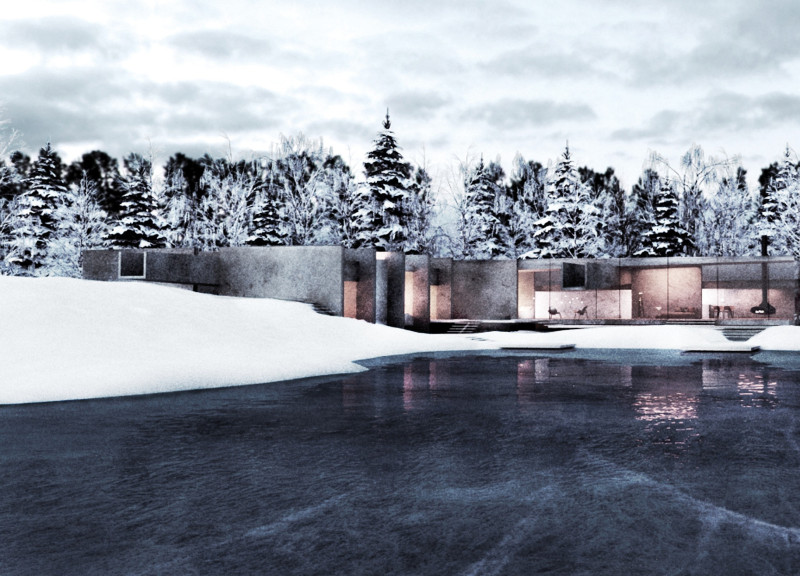5 key facts about this project
The Blue Clay Country Spa is located in the Latvian landscape, integrating with nature and focusing on water as a key element. The design aims to enhance wellness while promoting sustainability. The building serves as a collector of water and a visual point of connection to the surrounding environment, creating a unique user experience that complements the natural setting.
Structural System
A distinctive feature of the design is the system of beams that collect rainwater from the roof, channeling it to deposits at ground level. This aspect supports efficient water management and aligns with eco-friendly principles. Concrete walls and beams make up the main structural elements, allowing for cantilevers and open spaces that frame views of the landscape outside.
Spatial Arrangement
Inside, the spaces are arranged to promote cross ventilation and comfort, creating an inviting atmosphere for visitors. The spa area includes rooms that frame the landscape in different ways, offering various light experiences throughout the day. Some rooms utilize diffuse light, while others make the most of direct sunlight, enhancing the atmosphere and creating a deeper connection with nature.
Integration of Functions
Living areas connect directly to the spa facilities, allowing easy movement between different spaces. This setup encourages visitors to transition smoothly from relaxation activities to leisure. A platform that extends over a pond in the living area creates a strong visual link to water, reinforcing the connection between the built environment and its natural surroundings.
User Experience
The design focuses on creating an intimate experience for users. Each space is crafted to encourage a connection with the outdoors, showcasing the relationship between interior areas and the landscape. Attention to natural light and water features enhances comfort and supports an experience centered on wellness, inviting users to engage fully with both the space and nature.


























